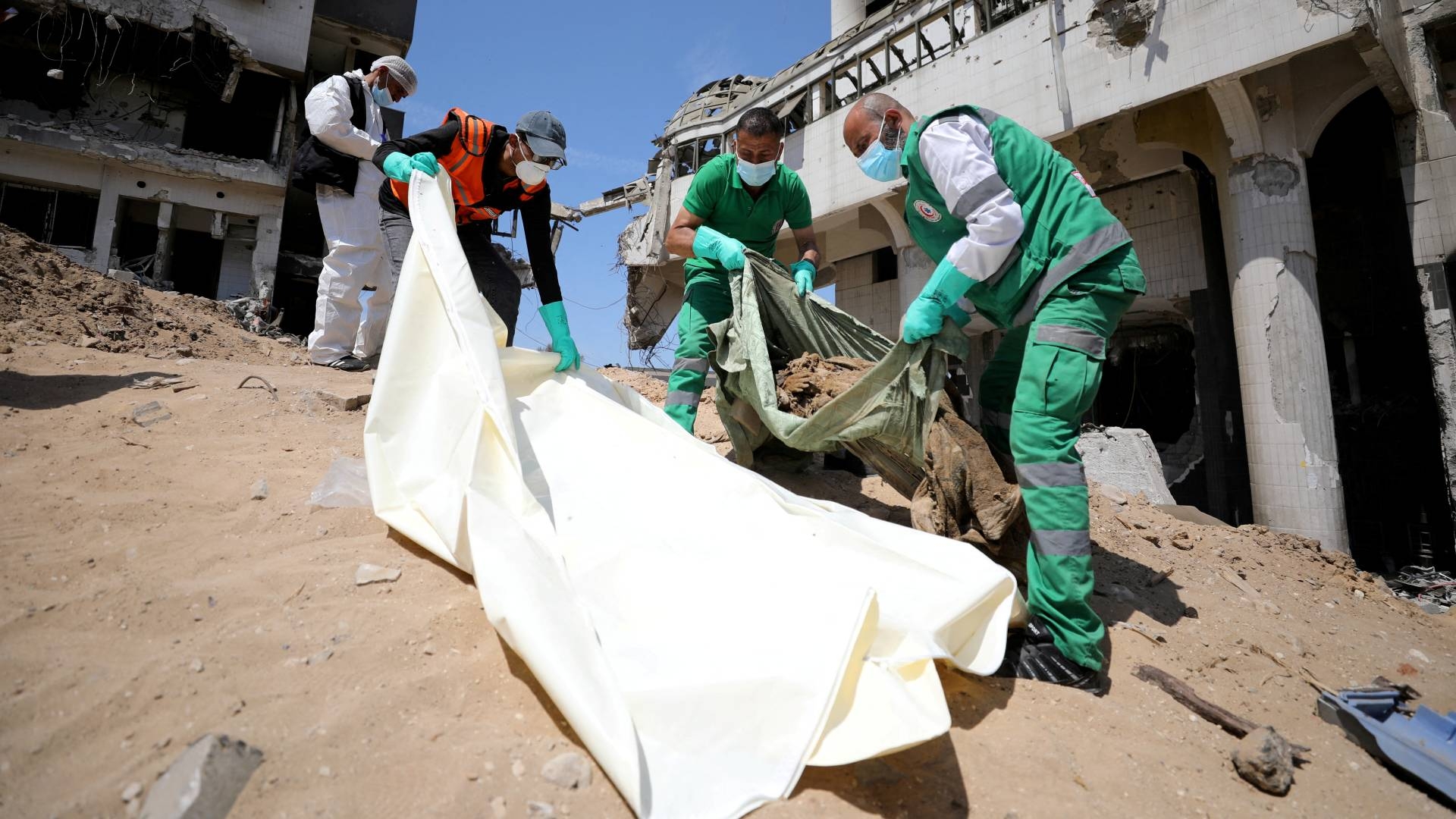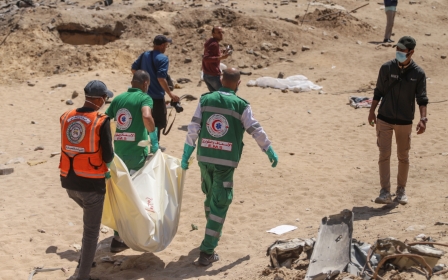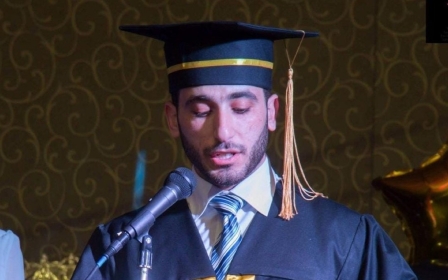Footage shows Israeli forces seizing dead bodies from Gaza's al-Shifa hospital

New footage obtained by Al Jazeera shows Israeli troops removing corpses from different locations in Gaza’s al-Shifa hospital, and loading them into trucks, following the initial Israeli raid on the Strip's biggest medical complex in November.
Al-Shifa and its surrounds have been raided at least four times since the start of the war on 7 October, according to the Palestinian Ministry of Health.
In the video, which was filmed on 16 November, Israeli soldiers are seen placing wrapped dead bodies on stretchers after they had taken them out from the hospital's morgue, a temporary mass grave in the hospital’s courtyard, and a tent where piles of corpses were stored.
In mid-November, Israeli soldiers stormed al-Shifa, where thousands of civilians had been besieged for days, including premature babies, critically ill patients, displaced families and medical staff.
The hospital ceased to function after the November raid, gradually turning into a displacement shelter for Palestinians.
New MEE newsletter: Jerusalem Dispatch
Sign up to get the latest insights and analysis on Israel-Palestine, alongside Turkey Unpacked and other MEE newsletters
Outside in the courtyard, people began digging graves to bury those killed whose bodies were left to rot for weeks, as Israeli forces continued their heavy shelling of the hospital.
During the first Israeli raid into the complex, the general director of the Ministry of Health, Munir al-Bursh, told Al Jazeera that the Israeli forces had taken around 120 dead bodies from the hospital.
“On the first day of the raid, we have managed to bury around 100 dead bodies in a mass grave in the hospital’s courtyard, and we were planning to continue the next day, but the Israeli occupation rushed to seize the corpses of the martyrs from the mass grave in the hospital,” al-Bursh was quoted as saying.
On 9 February, Israel said it took away around 350 dead bodies from Gaza and transported them to Israel to investigate whether or not they belonged to Israeli hostages, and return any who were not identified as captives to Gaza for mass burial, as announced by the Israeli official broadcaster.
Earlier in November, the Euro-Med Human Rights Monitor called for an independent international investigation to look into potential organ theft, as the Israeli army confiscated dozens of dead bodies from al-Shifa and the Indonesian hospital in northern Gaza.
Israeli troops re-stormed the complex late March, leaving the buildings of the hospital in ruins.
Military officials said that its forces killed 200 people and arrested 900 during its 15-day military assault on the hospital. Gaza's civil defence put the figure of those killed at around 300.
The army said it conducted its raid without harming civilians and medical personnel, but medical organisations and eyewitnesses have strongly rejected the claim, with eyewitness reports of field executions.
The World Health Organisation has also said that at least 21 patients died during the siege, while survivors told Middle East Eye that scores of civilians were killed during the fortnight-long blockade.
In April, the UN’s human rights chief Volker Turk said he was “horrified” by the scale of destruction that Israeli forces caused in Gaza’s Nasser and al-Shifa hospitals, following reports that mass graves have been found at the two hospitals after the Israeli invasion.
Middle East Eye delivers independent and unrivalled coverage and analysis of the Middle East, North Africa and beyond. To learn more about republishing this content and the associated fees, please fill out this form. More about MEE can be found here.




